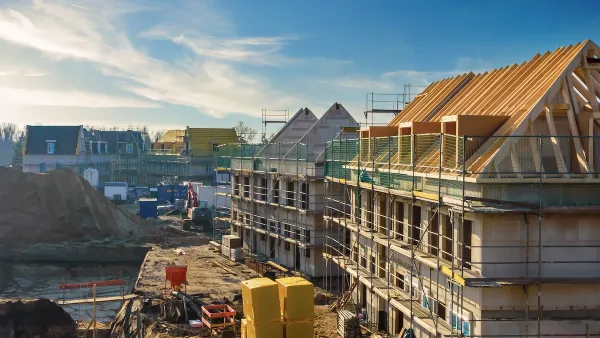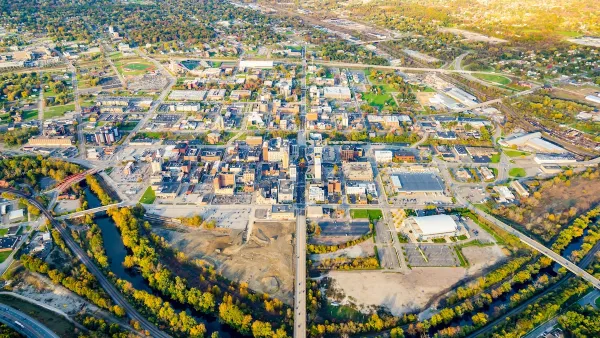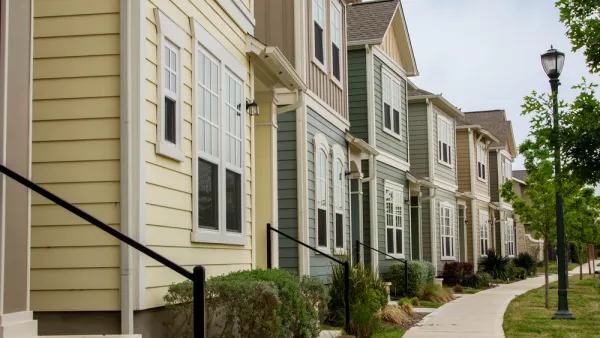Japan's system of zoning appears highly capable of fostering mixed-use, walkable neighborhoods. How does Japanese zoning differ from our own, and what factors caused those differences?

"Taken as a whole," Nolan Gray writes, "Japan's zoning system makes it easy to build walkable, mixed-use neighborhoods," making it markedly different from the prevailing American norm. "Japanese zoning is relatively liberal, with few bulk and density controls, limited use segregation, and no regulatory distinction between apartments and single-family homes."
What led to such a wide distinction between zoning in Japan and in the United States? Gray puts forward three main factors. For one thing, "the U.S. privileges real estate as an investment where Japan does not, incentivizing voters to prohibit new supply with restrictive zoning." Current law encourages homebuyers to treat their property as a way to "build wealth," standing in for a more robust social safety net. In Japan, however, homes have little resale value, fully depreciating in some cases after an average of only 22 years.
Second, Gray writes, "most public services in the U.S. are administered at the local level, driving local residents to use exclusionary zoning to 'preserve' public service quality," a process that exacerbates segregation by race and class. By contrast, Japan's local public services are standardized on the national level. The island nation compensates with high marginal tax rates and immigration policies that enforce racial homogeneity. "The desirability of the latter two policies is highly suspect, but the decoupling of public service quality from local municipal boundaries is a no brainer."
Finally, the U.S. practices "near-total deference" to local land use planning, normalizing the widespread use of discretionary permitting and magnifying the power of special interests. Japan uses an "as-of-right" system of permitting, "meaning that if a project complies with the zoning, it doesn't need to go through a discretionary review process."
"In this sense, Japanese zoning gets close to proper planning: policymakers consider upfront what type of development they would like to permit and where, and when developers come up with a conforming proposal, they hand over the needed permits."
FULL STORY: Why Is Japanese Zoning More Liberal Than US Zoning?

National Parks Layoffs Will Cause Communities to Lose Billions
Thousands of essential park workers were laid off this week, just before the busy spring break season.

Retro-silient?: America’s First “Eco-burb,” The Woodlands Turns 50
A master-planned community north of Houston offers lessons on green infrastructure and resilient design, but falls short of its founder’s lofty affordability and walkability goals.

Delivering for America Plan Will Downgrade Mail Service in at Least 49.5 Percent of Zip Codes
Republican and Democrat lawmakers criticize the plan for its disproportionate negative impact on rural communities.

Test News Post 1
This is a summary

Test News Headline 46
Test for the image on the front page.

Balancing Bombs and Butterflies: How the National Guard Protects a Rare Species
The National Guard at Fort Indiantown Gap uses GIS technology and land management strategies to balance military training with conservation efforts, ensuring the survival of the rare eastern regal fritillary butterfly.
Urban Design for Planners 1: Software Tools
This six-course series explores essential urban design concepts using open source software and equips planners with the tools they need to participate fully in the urban design process.
Planning for Universal Design
Learn the tools for implementing Universal Design in planning regulations.
EMC Planning Group, Inc.
Planetizen
Planetizen
Mpact (formerly Rail~Volution)
Great Falls Development Authority, Inc.
HUDs Office of Policy Development and Research
NYU Wagner Graduate School of Public Service





























